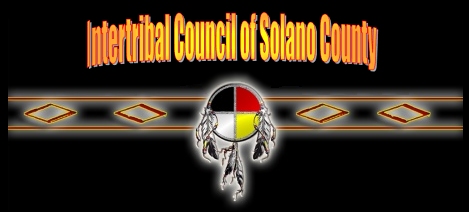| Margaret Eisenbise
used to work at the State Capitol
in Sacramento and couldn't believe
what she heard.
"Some of the assemblymen thought
California Indians didn't exist
any more," said Eisenbise, a
Vallejoan and member of the Mewuk
tribe.
In fact, Eisenbise pointed out,
there are now more Native Americans
in California than any other
state, including Oklahoma.
Educating the public is a constant
challenge, she said, and that's
one reason why Eisenbise gave
her stamp of approval to "Discovery,
Devastation, Survival: California
Indians and the Gold Rush," the
latest exhibit at the Vallejo
Naval and Historical Museum.
Though the wall panels of text,
photographs and figures lack
anything remotely technological
or interactive, that's OK, said
Eisenbise, a Berkeley social
worker.
"When you see these, you can
relate to it better than just
reading it in books," she said. "Indians
are visual people. It's like,
'So this is what Indian people
look like.'"
The traveling exhibit, which
debuted in 1997, explores the
effects of the Gold Rush on the
Sierra Nevada environment and
the mistreatment and enslavement
of Native Americans during that
time.
"Miners, soldiers and militiamen
descended up on some of our villages,
destroyed our homes, burned our
food and clothing and killed
men, women and children. They
were not punished and often rewarded
with a bounty."
Norman "Wounded Knee" Deocampo
read the words, looked at illustration
of Indian villages, and shook
his head.
"It's a sad thing what they
did to Native American peoples," said
Deocampo, another local Mewuk. "It's
still a sad thing because they're
still taking Indian land. It's
modern times but it hasn't changed.
This brings tears to my eyes."
Eisenbise said the exhibit was
equally disturbing to her.
"It makes me angry, mad, sad
and everything," she said. "It
comes to materialism and greed.
That's where the Gold Rush came
from. We hear about black slaves
because i'ts in the history books.
But we don't hear about Indian
people being slaves."
"Treaties signed by ancestors
were broken, new laws passed
that would make us slaves. Our
land was destroyed. We could
no longer survive as we have
for thousands of years."
"What I was taught in school
is that they came and discovered
gold at Sutter's Fort," said
Deocampo. "Many Indians were
wiped out from the Gold Rush.
I do know that. Everyone should
knaow the history of indigenous
people in this country and what
we gave."
"In 1848, 150,000 Indians lived
in California. Ten years later,
20,000 survived. We were deprived
of all rights, enslaved or reduced
to starvation or killed. Perhaps
the greatest curse the miners
brought was sickness for which
we had no cure. The period known
to the rest of the world as The
Gold Rush was, for u, nothing
short of genocide."
Midge Wagner, a member of the
Vallejo Inter-Tribal Council
and one of the founders of the
Vallejo Pow-Wow, said by phone
that she hoped the exhibit would
bring to light the abuse of Native
Americans during the Gold Rush.
A video she had previously watched
about the Gold Rush and Indians "really
opened my eyes," Wagner said. "You
hear how cool the 49ers were
and about their struggles opening
up the West and all that. Really
what they did was devastate the
Indian people."
Jim Kern, executive director
of the museum, was excited to
bring the exhibit to Vallejo "even
though it doesn't relate specifically
to tribes in the Vallejo area."
"There were many aspects of
how Native Americans were impacted
by the arrival of whites," said
Kern, adding that it's been a
learning experience for him.
"I was surprised to see that
there are ongoing issues facing
tribes today that grow out of
the same kind of things," Kern
said. "It's not as serious as
murder and disease, but it's
still issues that confine the
Native American community." |

